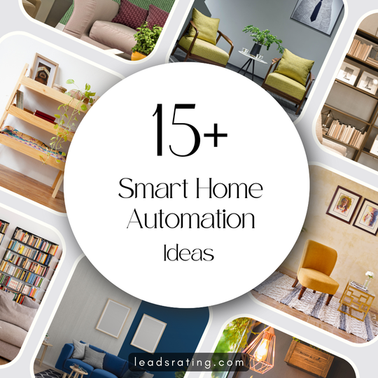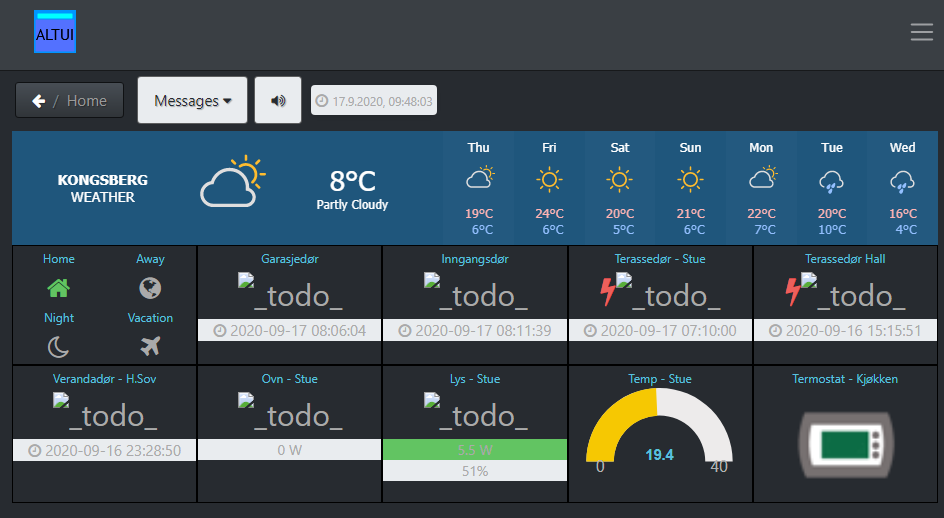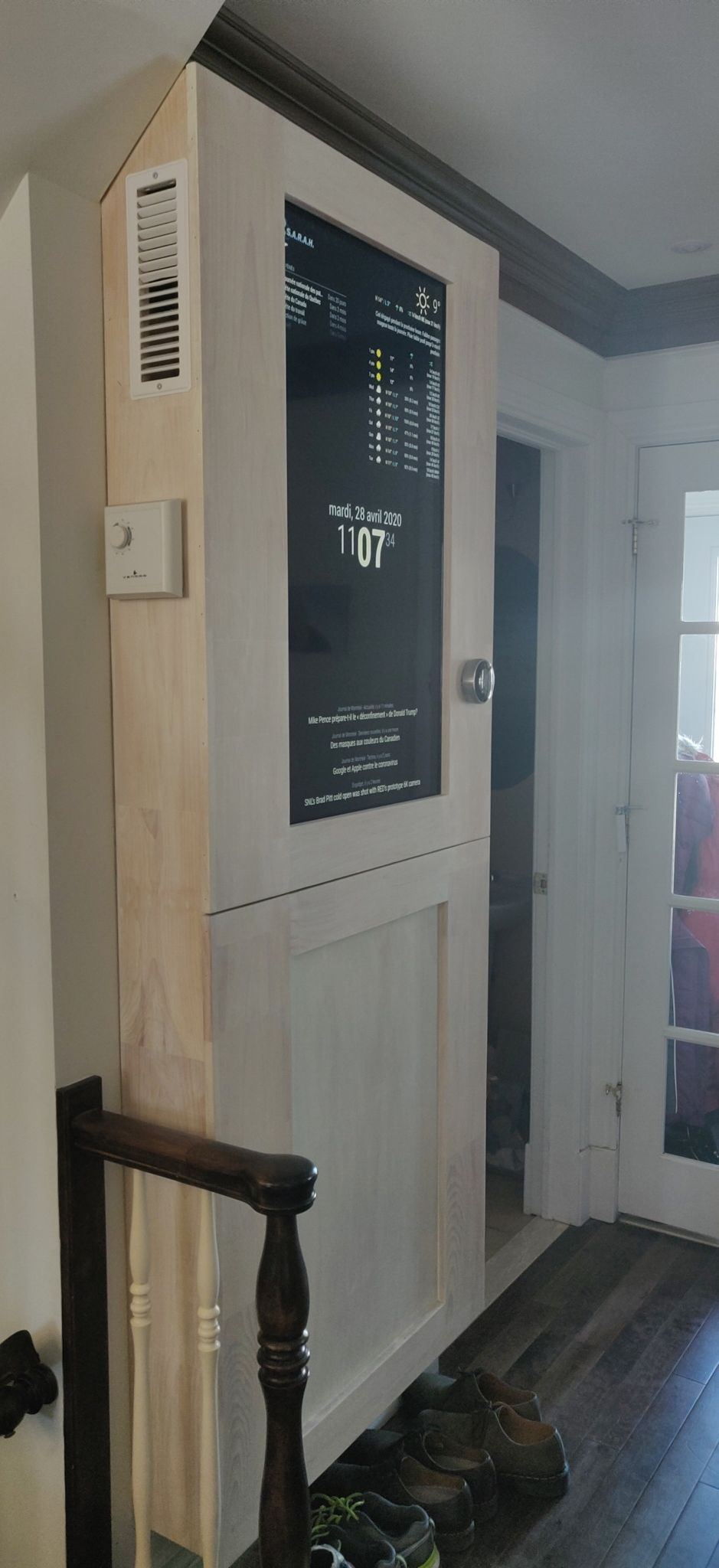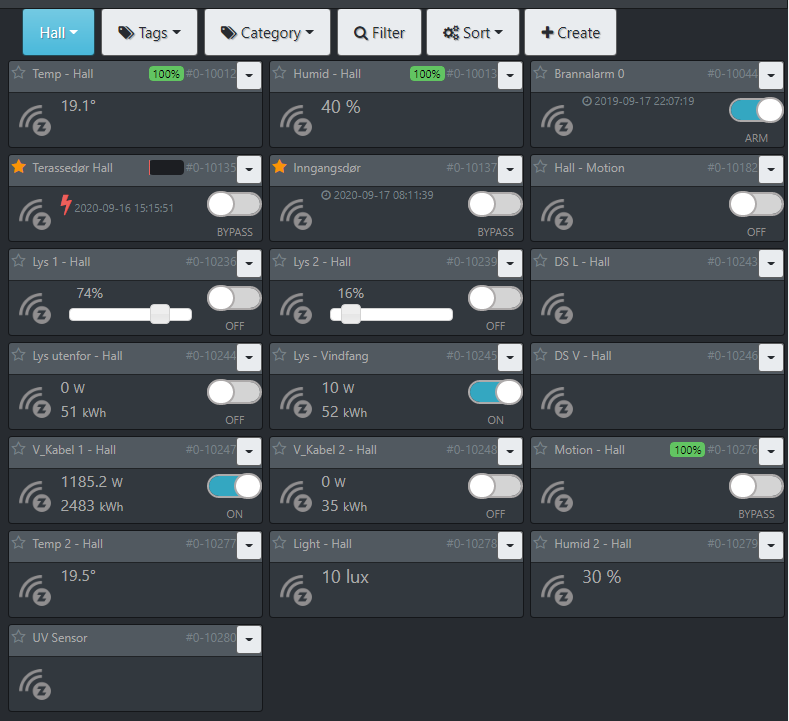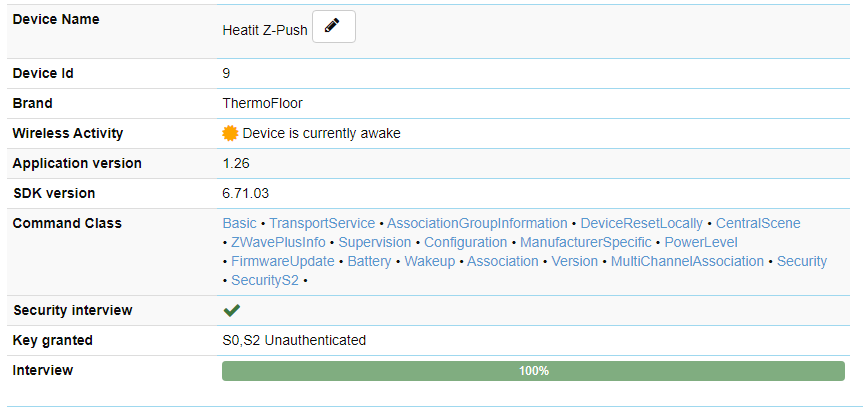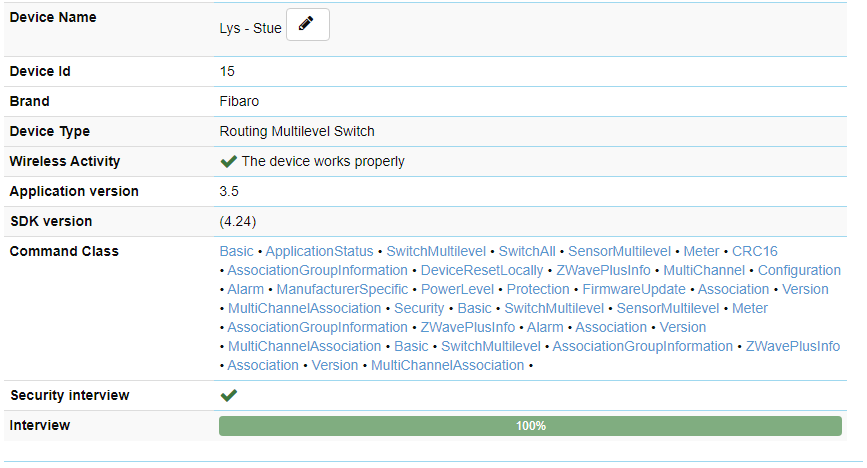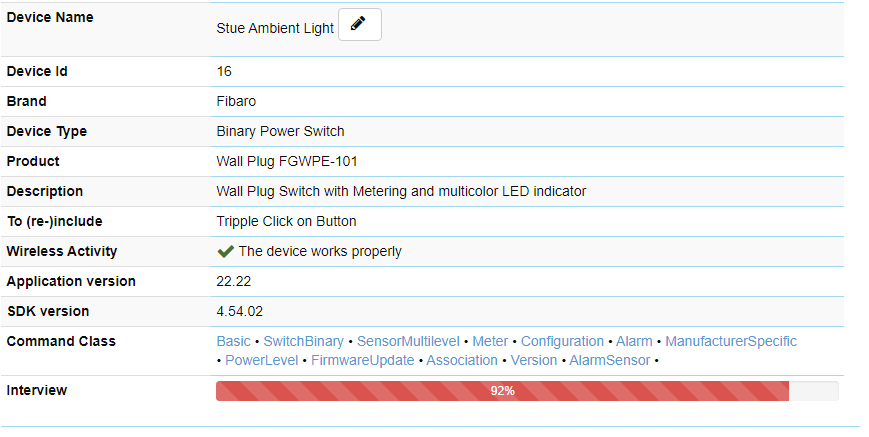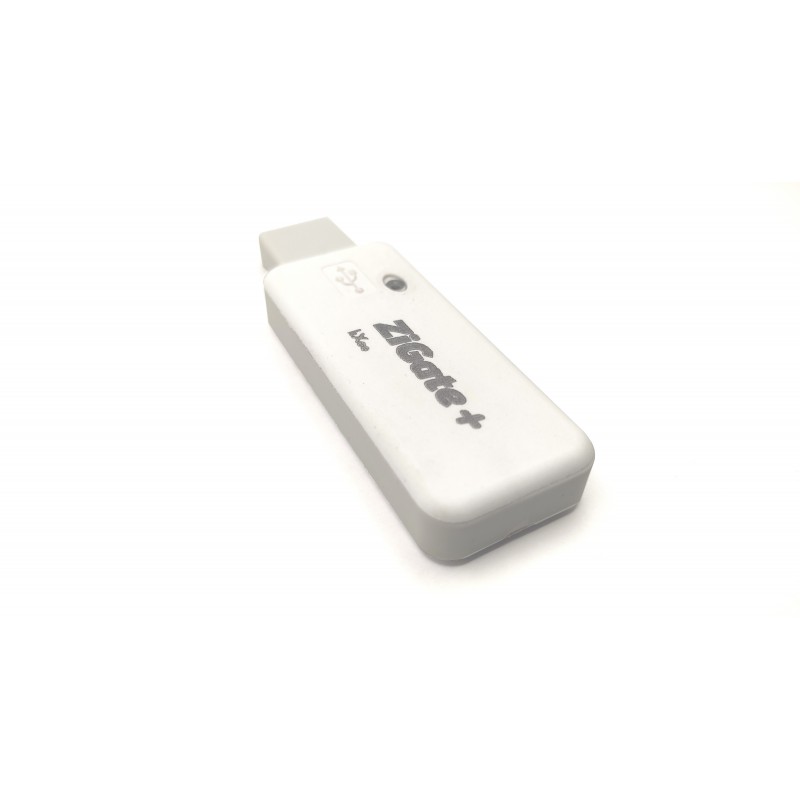Another transition from Vera to OpenLuup And now to HASS - PerH
-
Got some work done today too.
Z-way Bridge is working well, logged in with the admin account for the moment, as the AltUI account I created shows no devices in z-way smarthome.. (this may be why i didnt get them in the last time)..
InfluxDB is running on the chromebox, saving data to an external SSD.
Decided to go for a slow migration stratergy - one by one, instead of cloning the Vera. It's about 25 units, but I figured this will be an easier transition to do while running the house..Next step is zigbee. As i've understood it, you need HASS installed to take these off the Vera? at least until Rafale77 &Co makes DeCONZ work with OpenLuup?
Not very happy with vera's support on these either, there must be better alternatives.
-
For zigbee, there are multiple options.
I am personally using the zha component of home assistant and then synchronizing the ha device status and commands with openluup. It takes a bit of coding and is not a bridge per say. I have been considering moving the conbee to deconz and then write a bridge for it but never got into it due to these insane work hours I am facing now that we are working from home... I guess I should be grateful I still have a job. The way I am doing it is not very scalable but I only have 15 zigbee devices. If I had plans for more I would definitely be more motivated to create a proper bridge for either deconz or home-assistant but time... is what I am missing.
-
Ok, think I'll hold a while on zigbee then.. mabye even just find an aqara hub in the mean time, I really like the aqara sensors..
That thing called "work" takes way too much time over here too, considering the 10000 projects at home.
I Migrated 25 z-way units last night, and it became evident how superior Z-way is in device handling! All but one popped in at 100% interview at first attempt, only one old wall plug stopped at 92% (but it works)..
One issue i'd like to sort out, I have a Heatit/namron/Sunricher Z-push 8 button that refuses to assiciate with Fibaro dimmer 2 and wall plug. I read somewhere that this may be because of what secure level they are included with?
-
Ok, think I'll hold a while on zigbee then.. mabye even just find an aqara hub in the mean time, I really like the aqara sensors..
That thing called "work" takes way too much time over here too, considering the 10000 projects at home.
I Migrated 25 z-way units last night, and it became evident how superior Z-way is in device handling! All but one popped in at 100% interview at first attempt, only one old wall plug stopped at 92% (but it works)..
One issue i'd like to sort out, I have a Heatit/namron/Sunricher Z-push 8 button that refuses to assiciate with Fibaro dimmer 2 and wall plug. I read somewhere that this may be because of what secure level they are included with?
@PerH said in [Another transition from Vera to OpenLuup - PerH]
One issue i'd like to sort out, I have a Heatit/namron/Sunricher Z-push 8 button that refuses to assiciate with Fibaro dimmer 2 and wall plug. I read somewhere that this may be because of what secure level they are included with?
That is very possible:
- Many Fibaro devices are notoriously not conformal and use some exotic zwave implementations. They are problematic in almost any controller but theirs. Don't worry about the interview not completing. You can check which command class failed to complete. I am fairly sure it is the version class which has no functional impact.
- You can see that the heatit device was included with S2 security while the fibaro devices included with S0 and no security from the little logo next to the name. S2 security, for as old as it is and all the improvements that it brings has only been supported by 2 controllers... z-way is one of them. No, vera is not... I have never looked at security within association groups but I suspect that it is the problem.
-
I've personally had only good experience with Fibaro, they have treated me well..
Solution was to include the switch and the dimmer "unsecure". all thats left in the interview are "security" and "security S2" interview..
Any issues to think of when using unsecure?
The heatit thing still shows as S2 in the Z-Way GUI though.. anyway, it works!..And how well it works! feels like a transition to from (a badly set up) apple device to a proper Android phone!
 So much more direct control and insight to the z-wave system!
So much more direct control and insight to the z-wave system!All the reactors are transferred as well, and the chromebox is idling at a calm 6.7% CPU..
Regarding association in Z-way, the choice between Plain association, 0, 1 and 2 was a bit confusing, Plain was the one that worked. Anyone know what that is? This was a Fibaro Dimmer 2..
-
I've personally had only good experience with Fibaro, they have treated me well..
Solution was to include the switch and the dimmer "unsecure". all thats left in the interview are "security" and "security S2" interview..
Any issues to think of when using unsecure?
The heatit thing still shows as S2 in the Z-Way GUI though.. anyway, it works!..And how well it works! feels like a transition to from (a badly set up) apple device to a proper Android phone!
 So much more direct control and insight to the z-wave system!
So much more direct control and insight to the z-wave system!All the reactors are transferred as well, and the chromebox is idling at a calm 6.7% CPU..
Regarding association in Z-way, the choice between Plain association, 0, 1 and 2 was a bit confusing, Plain was the one that worked. Anyone know what that is? This was a Fibaro Dimmer 2..
@PerH said in Another transition from Vera to OpenLuup - PerH:
Any issues to think of when using unsecure?
Other than the fact that they are insercure, no...
@PerH said in Another transition from Vera to OpenLuup - PerH:
The heatit thing still shows as S2 in the Z-Way GUI though.. anyway, it works!
..And how well it works! feels like a transition to from (a badly set up) apple device to a proper Android phone!
 So much more direct control and insight to the z-wave system!
So much more direct control and insight to the z-wave system!All the reactors are transferred as well, and the chromebox is idling at a calm 6.7% CPU..
Glad it's working for you and I agree with the feeling, not so much with the comparison.
 To me it rather be "feels like a transition to from properly setup Android device to an out of the box iphone!" No more random stuff all over the place with half of them not working as expected...
To me it rather be "feels like a transition to from properly setup Android device to an out of the box iphone!" No more random stuff all over the place with half of them not working as expected... -
The reply is expected offcourse..
 My imression is probably from never actually getting a out-of-the-box apple device that just works.. My work pushes them on me, and i give them to my wife..
My imression is probably from never actually getting a out-of-the-box apple device that just works.. My work pushes them on me, and i give them to my wife..What's so unsecure about it? how could they be compromised? OK, i could just read up about it..

-
Regarding security of zwave:
The issue with non secure zwave is that one could use a zniffer and figure out what your network homeid is and spoof a controller with that id and then take control of your device. This won't happen with a security encoding which requires a key exchange (and 4x the number of packets exchanged to execute the same command). I actually experimented with it, having discovered my neighbor's homeid. If it is a light switch, big deal... I don't care, if it is a lock or security sensor... that's a different story. S2 security improves both the encoding and streamlines the security key exchange making it much more efficient, effectively cutting the traffic by half... impactful when it is a battery operated device (battery life) and knowing how tight the zwave bandwidth is.
-
Thanks, I'll take my chances that noone with do a hostile takeover on my living room lights.

Noticed that i have some "system error" and "Heat alarms" that is triggered on some switches/dimmers, dimmers that are running 10 watts.. no visible problems with them, so i wonder why? When will they reset?
I'd like to decipher these to full sentences, as the codes' meaning are explained in the manual.. any way to give the code to i.e. Reactor?
-
Thanks, I'll take my chances that noone with do a hostile takeover on my living room lights.

Noticed that i have some "system error" and "Heat alarms" that is triggered on some switches/dimmers, dimmers that are running 10 watts.. no visible problems with them, so i wonder why? When will they reset?
I'd like to decipher these to full sentences, as the codes' meaning are explained in the manual.. any way to give the code to i.e. Reactor?
@PerH said in Another transition from Vera to OpenLuup - PerH:
I'd like to decipher these to full sentences, as the codes' meaning are explained in the manual.. any way to give the code to i.e. Reactor?
If they’re available to the API that the ZWay plugin uses, then this should be possible. There is already a module in openLuup which is used for fixed text lookups (mime types, HTTP error code, ....)
-
I went ahead and gave it a shot. Can't really see any better ways to zigbee in openluup right now.. Vera is hopeless, ezlo plus equally hopeless (probably for years), HASS has no real bridge for interaction.. Have you looked at domoticz? That at least has a bridge plugin available?
-
domoticz is similar to home assistant on the zwave side since it uses the openzwave library as its zwave controller. It is not nearly as developed as Home Assistant though and yes I installed it to play with it at one point thinking about using the existing bridge but decided, given the fact that I have only a dozen devices to bridge over, to skip the bridge and just to call the Home Assistant API manually.
-
I went ahead and gave it a shot. Can't really see any better ways to zigbee in openluup right now.. Vera is hopeless, ezlo plus equally hopeless (probably for years), HASS has no real bridge for interaction.. Have you looked at domoticz? That at least has a bridge plugin available?
@PerH said in Another transition from Vera to OpenLuup - PerH:
Can't really see any better ways to zigbee in openluup right now..
the best solution is to write a bridge for deconz. I started to take a look at the docs, lately. https://github.com/dresden-elektronik/deconz-rest-plugin
The responses are remarkably like the Hue server's one. This is an extremely easy to integrate protocol format.http://dresden-elektronik.github.io/deconz-rest-doc/lights/
http://dresden-elektronik.github.io/deconz-rest-doc/sensors/There's also a WebSocket implementation, so real time updates instead of polling should be possible.
I've not invested into ZigBee beside a couple of Hue ligths and I'm ok with their hub (mostly because it's the only way to update the firmware), but I'm toying with this idea. In my mind, this should equally work on both Vera and openLuup.
-
Sounds promising!
It would be a good thing to get access to the more broadly used code out there, it doesn't look like ZiGate is very much used at the moment..
I would like to be able to help with some coding too, but always runs into a wall trying to figure out the layer hirearchy in lua/luup/java etc..In my world, there was a fierce battle yesterday.. The RFXtrx plugin (maybe in collusion with openluup) decided to delete my 40 devices, and preventing me from setting them back up by deleting the child device list twice..
I ended up deleting all RFX files, and installing an older version (1.41). Much better! Auto-create works, I can use sensors with the correct device files, not just as binary lights..When this finally was sorted, i discovered that all z-wave devices was gone after a reboot. looking in z-wave smarthome UI, they were gone as well! just the main devices, no child devices.
No error messages anywhere. I restarted z-wayserver.service, and things fortunately came back.. -
Sounds promising!
It would be a good thing to get access to the more broadly used code out there, it doesn't look like ZiGate is very much used at the moment..
I would like to be able to help with some coding too, but always runs into a wall trying to figure out the layer hirearchy in lua/luup/java etc..In my world, there was a fierce battle yesterday.. The RFXtrx plugin (maybe in collusion with openluup) decided to delete my 40 devices, and preventing me from setting them back up by deleting the child device list twice..
I ended up deleting all RFX files, and installing an older version (1.41). Much better! Auto-create works, I can use sensors with the correct device files, not just as binary lights..When this finally was sorted, i discovered that all z-wave devices was gone after a reboot. looking in z-wave smarthome UI, they were gone as well! just the main devices, no child devices.
No error messages anywhere. I restarted z-wayserver.service, and things fortunately came back..Has anyone looked at Zigbee2Tasmota? It is supposed to work with the Sonoff ZBBrigde which looks ok and is quite cheap. The bridge seems to be easy to flash with Tasmota.
I have been playing a bit with Tasmota on ESP8266 lately for sensors and is quite impressed. It seems quite capable and stable.I have so far avoided zigbee due to the lack of easy integration into my system except a few Hue light on a Hue hub and AltHue.
The upside of zigbee as I see it is that there are a few rather nice sensors such as Aqara that could be interesting to use.
//ArcherS

